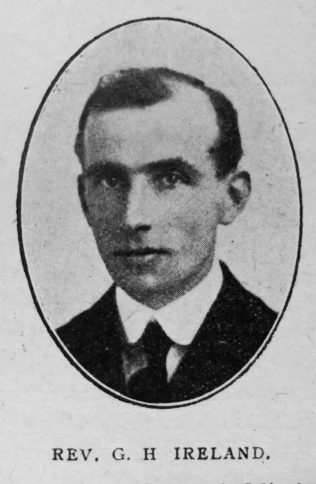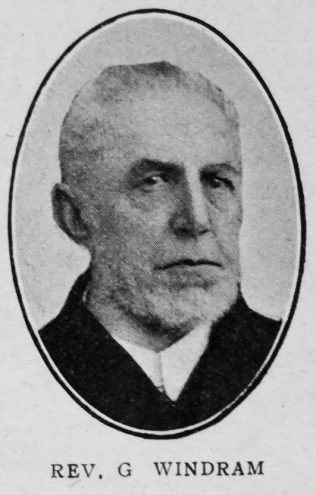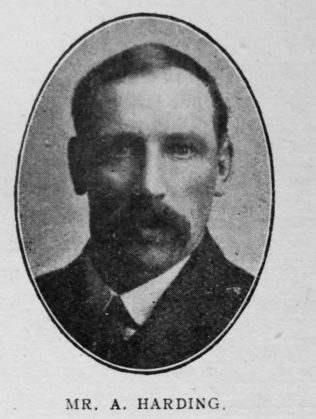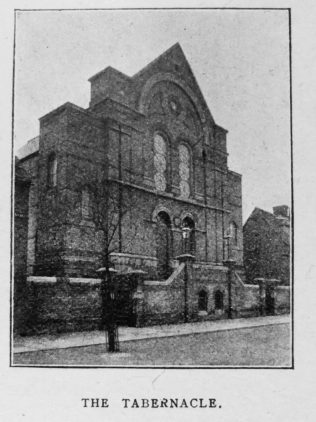Cambridge Circuit, Cambridgeshire








Transcription of Article in the Christian Messenger by Rev. James H. Rose
Cambridge shares with Oxford the honour of being one of the principal seats of learning. People come here from nearly all parts of the world to complete their education, and to gain equipment for the supreme tasks of life. The “output” of Cambridge is of it far different order to that of many towns, far more pretentious, but it is quite as important; indeed, upon the quality of its “output” depend the production of the centres of industry and the advance of civilisation at home and abroad. As a town it has had a continuous existence since the eighth century. The population is it little over 40,000, but its area is unusually large. The nineteen colleges with their grounds, in most cases very spacious and beautiful, are within its borders, and the celebrated Parker’s Piece and Midsummer Common, each the scene of many a great religious demonstration, add considerably to its extent.
In such a place as Cambridge the Ministry of the Church is of unique importance, for it must have a considerable influence upon the thought and action of those who will be the leaders of their fellows in all departments of life in the days to come. At present there are five thousand one hundred undergraduates in the town. These are one of the most important keys to the social, moral and spiritual progress of society, and the Church cannot ignore her duty in relation to these young men. The Anglican Church is fully alive to this fact, and through the services of the College Chapels, Great St. Mary’s, and other churches, is doing her utmost. Many of her leading preachers may be heard during term. The Free Churches are represented by the Baptists, Congregationalists, Presbyterians, Wesleyans and ourselves, whilst the Salvation Army has a flourishing Corps. The ministers of these are a happy brotherhood, and their fraternals, often addressed by a College Don, are intellectually and spiritually great times.
Without question the policy of Dr. A.T. Guttery, when General Missionary Secretary, to give our Church the larger opportunity better premises would provide, was sound.
The history of Primitive Methodism dates back to 1821, when Joseph Reynolds, in the July of that year, having journeyed from Tunstall, missioning on his way, reached Cambridge. On August 8th he wrote: “I have been a fortnight in Cambridge; sinners are frequently falling down and crying for mercy. Hallelujah”! Some have come many miles burdened with sin, and have gone home rejoicing. I cannot describe fully what a work there is at Cambridge.” Our first preaching place was a large loft, reached by an outside ladder, in a yard of Magdalen Street, very near Magdalen College. Here the infant cause suffered the usual persecution. On one occasion a man seized his daughter during the service and compelled her to leave the Ranters meeting, but she was determined to attend, and eventually the father himself became a member and a leading official of the Church. Our history with regard to chapels has been a very chequered one. We appear to have lost two, one of which is now the meeting place of the Catholic Apostolic Church. For some reason, at one time, Cambridge Circuit was punished by being left without a minister, but the desire of its officials and members to be supplied was shown in the action of the late Mr. John Read, who walked forty miles to the District Meeting and so successfully pleaded the cause of the Circuit that he returned with a man appointed to the station for six months. The first chapel was built in St, Peter’s Street. In 1855 a second chapel was secured on the eastern side of the town. The Wesleyans parted with their chapel in Fitzroy Street on very generous terms, and here a remarkable work was done. The congregation filled the place, and the spiritual life of the Church was great. It was in “Old Fitzroy Chapel,” as it was called, that the three gipsy brothers, Smith-Cornelius, Bartholomew, and Woodlock, were converted. This took place during the ministry of the late Rev. Henry Gunns. They at once requested permission to hold prayer meetings on Saturday nights, one week at Fitzroy Street and the next at St. Peter’s Street. Soon they were going to the village societies holding evangelistic services. This was the beginning of their very successful mission tours in different parts of the country. Gipsy Smith, of present day fame, was converted in Fitzroy Chapel, too, at a mission service conducted by the late Rev. George Warner, and here he began his public work which has developed into a world-wide ministry. His father, Cornelius, is still living, very feeble, but ever rejoicing in the wonderful success of his famous and gifted son.
In 1877 Fitzroy Street Chapel was sold, and its place was taken by the Tabernacle on Newmarket Road, and in 1878 Sturton Street Chapel was built.
For many years there were two Circuits, St. Peter‘s Street being the head of the first, and the Tabernacle of the second. The first act of the Universities’ Commission was to unite the two stations. This took place in 1909. For some time the Forward Movement was in abeyance, and there was a disposition to revert to the old order of two Circuits. However, this was avoided, the appointment of the Revs. George and Shirley Windram helped considerably to keep the churches under one authority. The new ministers did splendid service and the Church will ever be indebted to the Rev, George Windram for the magnificent work he did for the new church and school in Castle Street. He had all the preparatory toil necessary to such an enterprise, begging donations, holding Trustees’ Meetings, doing his preaching, under the disadvantage of the temporary accommodation afforded by a disused skating rink taken whilst the new buildings were being erected, the old chapel having been pulled down. The new buildings were not opened till October, 1914, Mr. Windram having left the previous July. The late Rev. J. Day Thompson was now in charge, with the Rev. J.B. Hardy as his colleague. High hopes were entertained of Mr. Thompson‘s ability to gather the undergraduates to the new church, and to win his way with the members of the University. But the war spoiled his opportunity; the town was soon full of troops; the undergraduates had enlisted, and our schoolroom was occupied by the military. Mr. Thompson, however, bravely faced the situation, and, with Mrs. Thompson’s co-operation, did fine work amongst the soldiers, and later for the Cadets, who made their homes in the Colleges whilst training for commissions in the Army.
The Castle Street premises are much admired by all who see them. They are certainly one of the best properties we have in East Anglia, and it was an occasion for gratitude that they were erected before the war, or else the Forward Movement at Cambridge must have been postponed indefinitely. The Church seats 450 people. Its acoustics are perfect. The congregations are good and there is a large number of young people strongly attached to the place.
The school hall, class rooms, and Primary Department provide splendidly for work on behalf of the young people. The cost was £5,092. A debt of £2,400 was left on the property. This was far too heavy a burden for a Church of under 100 members, all of whom are working people. The enterprise, indeed, was not a Cambridge undertaking, but the enterprise of the General Missionary Committee, in conjunction with the Cambridge authorities. It was rightly a Connexional project because the needs of many young Primitive Methodists who come from all parts of the country to the University and the Young Ladies’ Colleges had to be provided for. The provision of a suitable place of worship for them must react beneficially on the life of the Church in the days to come. It is very encouraging to know that in almost every case they show their hearty appreciation by a regular attendance at the Church. The Church Extension Fund made an offer in 1917 of £500 if a like sum was raised. This has just been done, and with the reduction made during Mr. Thompson’s ministry, the debt is now £1,200. The future of this Church depends first upon paying off the mortgage, so that ministers and people can give themselves to Church building in the highest sense of the word. There is a fine prospect and a great opportunity. The Church generally cannot find a better investment for its money and talent, because its ministry to the young men and women who come to Cambridge is of the highest importance and value to the Church as a whole. Messrs. C. Bidwell, E.J. Hall, S.F. Armstrong, F.L.S., J. Woodgatc, W. Mowlam, A. Munson, A. Barker, W. Stearman, and ]. Eagling are amongst the most active workers in a Church where all do their best.
The Tabernacle has not fulfilled the hopes of those who advocated the change from Fitzroy Street. Notable work was done by the Rev. George Kemp, whose memory is still cherished with warmest regard. He gathered a large congregation and was popular to the highest degree in the town and district. He spent his strength in three years and died in the prime of life. Three leading gentlemen in the town showed the high honour in which they held him by providing a house for his widow as long as she lived. The Revs. H. Fleming, H. Bennett, W.M. Batterbee, and J.W. Whittaker have all done well here. But the long-standing debt has crippled the work, There is a small band of loyal and devoted workers who toil on hoping that even yet the Tabernacle may be the home of a prosperous Church. Valuable Sunday School work is being done in the crowded district. Messrs. H.W. Howell, S. Gentle, D. Gentle, F. Darler, A.J. Deeks, W. Northfield are holding the fort.
Sturton Street Chapel is in the heart of a working-class district. It is small, but filled. There is a splendid band of workers and a band of young people of whom any Church might be proud. A forward movement here is long overdue. The Trustees own a cottage and land adjoining the chapel, and intend building as soon as possible. Messrs. A. Harding, W. Gibbey, G. Shoote, S. Green, ].W. Kerry, A. Endersby, C.A.G. Harding, and W.J. Deeks are with others doing a great work.
The village societies number seven, but are not strong. The members, however, value their connection with Primitive Methodism, and are a delightful people to serve.
Oakington, where Messrs. W. Doggett and J. Harradine are the stewards, is a small village five miles from Cambridge. The chapel was built in 1876. A useful work is being done.
Sawston is a large village. The chapel dates back to 1861. The membership is small, and the friends are aged, but they are exceedingly loyal. Just now there is an improvement in finance and congregations. Messrs. A. Peters and T. Pilgrim are the leaders.
Fen Ditton – famous for its association with the University Boat Races – is a beautiful village. The chapel was built in 1880. Here Brothers B. Cullum, T, Sharpe, W. Hibling are most devoted workers. Fen Ditton is becoming famous for its interest in the Missionary Cause, having done exceedingly well during the past few years.
Toft Chapel was built in 1861. Here there is a good village society. Messrs. A. Tebbit, C. Tebbit, B.L. Tebbit, and D. Creek are a reliable band of men.
Dry Drayton Chapel dates back to 1862. This is the weakest church, but Brothers G. Rooke and G. Arnold labour in hope of better times.
Haslingfield is a capital society. The chapel was erected in 1869. Splendid work is done in Sunday School and Band of Hope. Messrs. T. Smith, J.H. Pryor and E. Dowling lead the way well.
Childerley Gate is a very small village, but good work is being done in the Sunday School. This village cause has just lost by sudden death its Steward and Sunday School Superintendent in the person of Mr. Ezra Pratt, a splendid man. His widow and those remaining will do their best to carry on.
A word must be said about the late Mr. John Read, father of the late Rev. J.F. Read, who was Circuit Steward for fifty years, and School Superintendent at St. Peter’s Street fifty-seven years. His memory is highly revered and his name often mentioned by those who knew him, as an example of passionate loyalty and fervent zeal for the Church he loved. His son superannuated, and was a member of the church of his early days for sixteen years. He was an ardent and generous supporter of the Forward Movement.
Professor W.L. Wardle, M.A., B.D., is a Cambridge man, his father, the Rev. A.T. Wardle, spending seven years of a very valuable ministry here.
Professors A.L. Humphries, M.A., Atkinson Lee, M.A., and the Rev. J. Harryman Taylor, M.A., are graduates of Cambridge University, and were loyal to the Church during their term. The mother of the three worthies, the Rev. H. G. Marsh, B.A., B.D., H. Marsh, and A. Marsh, is an earnest member at Castle Street. Her son Percy is also doing good service as an H.L.P. Not many mothers have given three sons to the ministry.
The Rev. G.H. Ireland is proving himself a worthy successor of the Rev. J.B. Hardy, who succeeded in obtaining his degree whilst here. Mr. Ireland is seeking the same honour, and has every prospect of gaining it.
References
Christian Messenger 1920/106





No Comments
Add a comment about this page